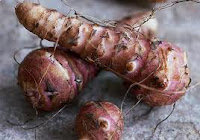Probiotics + Green Tea - Synergistic Superstack or Sciency Non-Sense? Green Tea Alone Totally Blunts HFD Induced Weight Gain, L. Plantarum Does Not Add to Its Effects
 |
| L. plantarum may metabolize green tea phenols, but don't add to their anti-diabesity effects |
'1 + 1 =4' the synergism of green tea and probiotics could make it possible
I guess, the idea sounds logic: Take one thing that has been proven to ameliorate diet induced obesity, namely green tea, and combine that with another one, of which it appears as if it would also exhibit beneficial effects into an even more potent stack. In fact, the scientists' rationale was yet slightly different:
"The species Lactobacillus plantarum (L. plantarum) has the ability to metabolize phenolic acids and to split up tannins. The metabolites are presumably more easily absorbed and distributed into the tissues where they can act as antioxidants and electron scavengers. Phenolic compounds can also have antimicrobial effects that may affect the composition of the gut microbiota, in favour of polyphenol-metabolizing components of the microbiota. Also, green tea extracts have been shown to selectively inhibit the growth of pathogenic bacteria while either enhancing or not affecting the growth of beneficial bacteria like lactic acid bacteria. To the best of our knowledge, the impact of green tea powder as a prebiotic compound to promote lactobacilli or other health promoting components of the microbiota has not previously been evaluated."In other words, the expected benefits of providing both green tea and probiotics in conjunction were (1) an increased bioavailability of the phenols and tannins from the green tea that would be induced by the probiotics and (2) an increase in the probiotics' survival and ability to modify the gut microbiome that would be brought about by the addition of the green tea.
What looks good on paper does not necessarily work out in a complex organism
-20% Reduction in Serum Testosterone by 5 Cups of Green Tea. Endocrine Effects Depend on Catechin Composition". In case you are one of the many newcomers or have simply forgotten (let alone missed ;-) this post, I suggest you go back and read that up, as it may help you get a better understanding of the underlying reasons due to which quality and quantity of the health effects of green tea (supplements) wary from study to study... but let's now get back to the experimental setup of the Axling study.
Green tea alone already blunts HFD induced weight gain
As mentioned before the extracts were simply mixed with the high fat diet, the mice were consuming in the course of the 22 week study period. With the probiotic supplement that was administered with the drinking water (L. plantarum at 1.5% (v/v) or roughly 3 × 10^9 cfu/ml) we are thus dealing with four different groups:
- Control: High fat chow + no supplement
- LP: High fat chow + L. plantarum
- GT: High fat chow + green tea
- GT + LP: High fat chow + green tea + L. plantarum
 |
| Figure 2: Glucose insulin, fructosamine, cholesterol, triacylglycerol, non-esterified fatty acids and adiponectin levels in the blood of the mice in week 11 and week 22 of the study (Axling. 2012) |

|
| Figure 3: Relative change (compared to control) in bacterial diversity and lactobacilli count in response to the supplement regimen (Axling. 2012) |
Minor differences with quasi-nonexistent real-world effects
At the mRNA level, the addition of L. planatrum counter-acted the anti-obesity effects of green tea, as evidenced by
- 20% higher fatty acid synthase levels, an enzyme that's responsible for the synthesis of fatty acid
- the reversal of the statistically significant reduction in acetyl-CoA caroxylase (ACC), an enzyme that's one step ahead of FAS in the cascade of which you could say that it supplies the raw material for fatty acid synthesis, and
- minimally higher PPAR-gamma levels (responsible for fat storage)
 |
| Figure 4: Body weight and fat levels of the mice (Axling. 2012) |
- a statistically non-significant -20% reduction in the mRNA expression of the inflammatory marker TNF-alpha, and
- a whopping and surprising increase in HMG-CoA reductase of +50% and +70% increase in HMG-CoA reductase mRNA compared to the green tee only and the control group, respectively
 |
| Figure 5: Liver cholesterol and HMG-CoA-R after 11 (top) and 12 (bottom) weeks (Axling. 2012) |
 |
| What do these Jerusalem artichokes, agave, bananas, burdock, camas, chicory, coneflower, costus, dandelion, elecampane, garlic,jicama, Leopard's-bane, mugwort, onion, wild yams, yacon and a whole host of other foods have in common? Right! They contain inulin. which has only recently been shown to have the ability to ameliorate body weight gains by up to 50%! Intriguing? Go back to my previous post and learn more about inulin, beta-glucans and their anti-diabesity effects. |
Maybe the provision of another probiotic or even another strain of L. plantaris would yield at least '1 + 1' results. This would yet be a research question for another study (one I would by the way not be willing to finance ;-) and does not change the fact that the original research hypothesis that there would be a potentiating effect due to the synergism of the two supplements is - even if the scientists don't openly acknowledge that - debunked for L. plantaris DSM 15313 and green tea.
References:
- Axling U, Olsson C, Xu J, Fernandez C, Larsson S, Ström K, Ahrné S, Holm C, Molin G, Berger K. Green tea powder and Lactobacillus plantarum affect gut microbiota, lipid metabolism and inflammation in high-fat fed C57BL/6J mice. Nutr Metab (Lond). 2012 Nov 26;9(1):105.
- Stancu C, Sima A. Statins: mechanism of action and effects. J Cell Mol Med. 2001 Oct-Dec;5(4):378-87.



